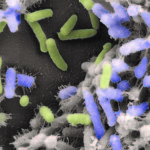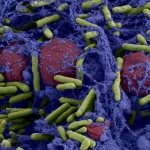Link to Pubmed [PMID] – 20935093
J. Bacteriol. 2010 Dec;192(24):6418-27
Random transposon mutagenesis is the strategy of choice for associating a phenotype with its unknown genetic determinants. It is generally performed by mobilization of a conditionally replicating vector delivering transposons to recipient cells using broad-host-range RP4 conjugative machinery carried by the donor strain. In the present study, we demonstrate that bacteriophage Mu, which was deliberately introduced during the original construction of the widely used donor strains SM10 λpir and S17-1 λpir, is silently transferred to Escherichia coli recipient cells at high frequency, both by hfr and by release of Mu particles by the donor strain. Our findings suggest that bacteriophage Mu could have contaminated many random-mutagenesis experiments performed on Mu-sensitive species with these popular donor strains, leading to potential misinterpretation of the transposon mutant phenotype and therefore perturbing analysis of mutant screens. To circumvent this problem, we precisely mapped Mu insertions in SM10 λpir and S17-1 λpir and constructed a new Mu-free donor strain, MFDpir, harboring stable hfr-deficient RP4 conjugative functions and sustaining replication of Π-dependent suicide vectors. This strain can therefore be used with most of the available transposon-delivering plasmids and should enable more efficient and easy-to-analyze mutant hunts in E. coli and other Mu-sensitive RP4 host bacteria.





